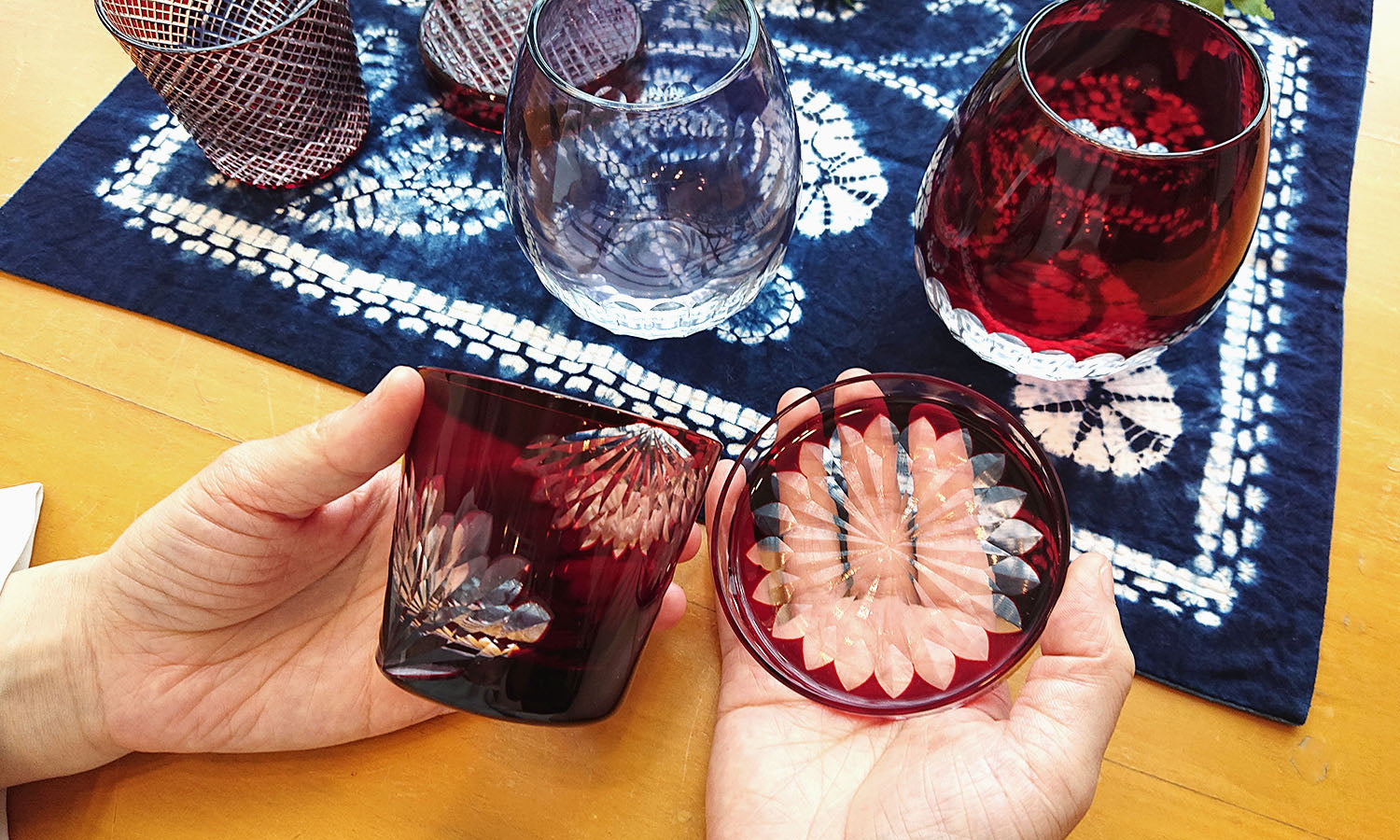Enjoy Japanese glass ware with the sound of rain
The hydrangea under the raindrops seems more beautiful than under the sunshine.
So, we are in rainy season now!
We have to make advantage of this season.
Anyway, even though you are not under rainy season like Japan, you might be forced to stay at home because of the pandemic.
In this case, we recommend you to enjoy to select your favorite kitchen ware while feeling the atmosphere of outside, raindrops, sunshine, windy sky etc...
As you know, Japanese people like to enjoy by hearing and feeling the sound of nature through "shoji" paper sliding door or even the glass window in our actual modern life.
Anyway, the sound of rain makes me calm and I can get back the peaceful moment if I see several beautiful glassware.
So, today, we will talk about "Edo kiriko" , one of the representative traditional glass in Japan.
What is Edo kiriko?
Edo kiriko is the glassware which was born at the 19th century in Toyko and has beautiful clear coclor cutting metod into glass.
Tokyo was called as "Edo" at that time, this is why this glass craft is called as "Edo kiriko", and "kiriko" means the technique of cut class.
It is said that the technique of Edo kiriko was founded by Kagaya Kyubei who was a dealer of glassware brought by European merchants.
He had an epiphany to make some pattern into his glassware and a lot of craft men in Sumida ward in Tokyo, started to develop their technique of glass cutting.
The view of "IN EI RAISAN" developed the technique of Edo kiriko
Do you know one of the great author of aestheticism Tanizaki Junichiro?
His essay "IN EI RAISAN" which is translated in English as "In Praise of Shadows" shows that the importance of "shadow".
This work might be bible for architects of Japanese traditional house.
Tanizaki mentions in the "IN EI RAISAN" as follows;
------------------------------------------------------------------------------------------------------
The sunlight shall enter though "Shoji" Japanese paper sliding door into a room. You room becomes slightly bright. It makes humble feeling for the nature.
This indirect lighting is our element of beauty. We put the modest color's sand painting on the wall which produces calm, simple space which leaves some loss of strength.
--------------------------------------------------------------------------------------------------------
Japanese people have lived in harmony with nature. Our craft men took care of the color and shading whether if a craft can make harmony with nature.
This is why, the traditional Japanese crafts seem a little bit modest color which is suitable for our life style of "IN EI RAISAN".
And, if we can enjoy imported glassware from Europe with Japanese way, glassware was needed to change more suitable with nature.
Glass craft men in Sumida ward in Tokyo tried to make extremely beautiful glass cutting.
Once, they cut the glass so deep and refract light, gather some thin line of cutting and make reflect...sometimes they finish up with frosted glass.
The unique technique of cutting glass of Edo kiriko makes extremely beautiful shadow.
The typical idea of beauty for Japanese people is as follows;
Sunlight must be entered softly through Shoji paper slide door or roof. Tanizaki Junichiro mentioned same things in his essay "IN EI RAISAN".
If we see the glassware of "Edo kiriko" in the room little bit dark, not under the sunshine, you will discover its own beauty.
Furthermore, if you would like to know about the idea of beauty of Japanese people, I recommend you to read "IN EI RAISAN", "In Praise of Shadows"
You may find the English translation for example in the Amazon book store.
The sensitive feeling for "light and shadow" which is to make harmony with nature developed and completed the technique of Edo kiriko.
Our Edo kiriko is made by hand so carefully by craft men and you can enjoy the cutting beauty of glass with modern style.
If you would like to see more our products, please check from here.
We will introduce "how to manufacturer Edo kiriko" and "traditional pattern of cutting " on next blog.
Thank you so much for reading to the end.

